People
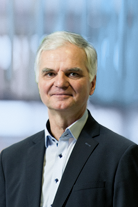
Eike Brunner
Technische Universität Dresden
Group homepage | Project # RTG2861-C1
The Brunner group has carried out solid-state NMR spectroscopic analyses of the structure and dynamics of various materials like MOFs, biominerals, and during the last years also 2D materials like 2D COFs. Furthermore, we develop and apply in situ NMR techniques to study adsorption processes, electroadsorption and electrocatalytic reactions as well as synthesis reactions in ionic liquids. Note that in situ NMR for example allows to spectroscopically distinguish between adsorbed and non-adsorbed species and is quantitative. Spin hyperpolarization techniques like dynamic nuclear polarization (DNP) and spin-exchange optical pumping (SEOP) are also used by the Brunner group.
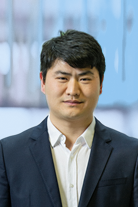
Renhao Dong
Technische Universität Dresden
Group homepage | Project # RTG2861-A1
The Dong group is leading the synthesis of 2D c-MOFs and the development of MOFtronics together with local and international collaboration partners, like theory group of Heine, synthesis groups Kaskel and Feng, spectroscopy groups Weidinger and Brunner, and device group headed by Allendorf. We recently developed high-mobility (~220 cm2/Vs), semiconductive 2D c-MOF thin films with band-like transport for optoelectronics, discovered ferromagnetic semiconducting properties in 2D c-MOFs for the contribution to spintronics, and established 2D c-MOF based electrocatalysts for energy devices.

Xinliang Feng
Technische Universität Dresden
Group homepage | Project # RTG2861-A2
The Feng group has pioneered the bottom-up synthesis of nanographene molecules, heteroatom-doped polycyclic hydrocarbons and GNRs. We recently explored the on-surface synthesis of the topological quantum phases in GNRs together with the Fasel and Müllen groups, and NBN-doped zigzag-edged GNRs, as well as the solution synthesis of curved multi-edge GNRs with high intrinsic charge carrier mobility.
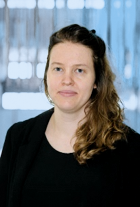
Dorothea Golze
Technische Universität Dresden
Group homepage | Project # RTG2861-C2
The Golze group has recently advanced the highly accurate GW method to molecular 1s excitations. We showed that GW can overcome the shortcomings of DFT-based methods and reproduces absolute and relative molecular 1s excitations within 0.3 eV and 0.2 eV of experiment, respectively. The GW method is computationally orders of magnitude more expensive than DFT. In order to make the computation of model systems with several hundreds of atoms feasible, we developed efficient algorithms to reduce the computational cost of GW. So far, these algorithms are restricted to valence states. The extension to the computationally more challenging core-level case is currently addressed, as well as the inclusion of periodic boundary conditions.
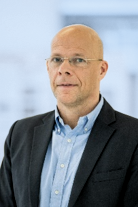
Dirk Guldi
Friedrich-Alexander-Universtät
Group homepage | Project # RTG2861-C3
At the heart of the Guldi group’s activities are advanced photon- and charge-management at the nanoscale, in general, and at the edges or within planes of PCLs, in particular. All new materials featuring energy- and electron-donating porphyrinoids are comprehensively characterized by spectroscopic, thermal, and microscopy means. In our experiments we gather far-reaching insight into the electronic interactions across different time scales.

Marcus Halik
Friedrich-Alexander-Universtät
Group homepage | Project # RTG2861-B1
The Halik group has established SAMs as functional layers in organic electronic devices (transistors, solar cells and memories). We have demonstrated that SAMs can be used as universal features ranging from active transport layers, injection layers, dielectrics to mediators for region-selective growth of subsequent layers. Additionally, SAMs can act as key-enabler to tune and to control nanoparticles properties and their hierarchical assembly by tailor-made molecular structure and composition as nanoparticle mono- and double layer shells.
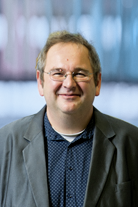
Thomas Heine
Technische Universität Dresden
Group homepage | Project # RTG2861-B2
The Heine group has pioneered the theoretical analysis of 2D COFs and 2DPs in collaboration with leading experimental groups and explored the topological space for 2DP nets. Special emphasis was given to the combined honeycomb-kagome lattice, for which we also explored the boron nitride counterpart and the square-octagon (fes) lattice.

Andreas Hirsch
Friedrich-Alexander-Universtät
Group homepage | Project # RTG2861-A3
The Hirsch group has been pioneering and is at the forefront of carbon allotrope chemistry and is well known for the investigations of basic principles for the functionalization of the 0D fullerenes, the 1D carbon nanotubes and the 2D graphene, leading to the synthesis of numerous examples of derivatives with tailor made structural, electronic, photophysical and biomedical properties. These studies are also extended to new 2D-materials including black phosphorus and transition metal dichalcogenides.

Stefan Kaskel
Technische Universität Dresden
Group homepage | Project # RTG2861-A4
The Kaskel group has significant experience in the synthesis of precursor derived carbon materials. The group has pioneered the development of novel electroadsorption devices and has extensive experience in developing carbons for electrochemical storage applications. The first effective exfoliation of a 2D coordination polymer and conversion into porous carbon was demonstrated. We aim to develop this technology further for additive manufacturing and patterning of PCLs for the design of nanostructured supercapacitors.
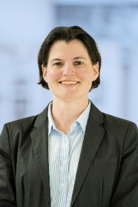
Sabine Maier
Friedrich-Alexander-Universtät
Group homepage | Project # RTG2861-B3
The Maier group has excellent expertise in studying structural and electronic properties on surfaces at the atomic scale using high-resolution SPM / scanning probe spectroscopy (SPS). Recently, we focused on the self-assembly and on-surface synthesis of atomically-defined low-dimensional carbon materials and on the functionalization of graphene. We accomplished synthesizing 1D and 2DPs, and graphyne lattices and understanding their properties by high-resolution low-temperature SPM/STS.
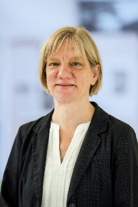
Janina Maultzsch
Friedrich-Alexander-Universtät
Group homepage | Project # RTG2861-C4
The Maultzsch group has long-standing expertise in the structural and symmetry-based, vibronic and optical properties, electron-phonon coupling, and effects of chemical functionalization of graphene, GNRs, 2D materials, and carbon nanotubes. Our group has predicted the vibrational properties in conventional and edge-functionalized GNRs, contributed significantly to establishing the concept of double-resonant Raman scattering in graphene-based materials, and is currently working on spatially defined functionalization of graphene through substrate patterning.
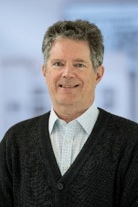
Hans-Peter Steinrück
Friedrich-Alexander-Universtät
Group homepage | Project # RTG2861-A5
The Steinrück group addresses the formation, intercalation, functionalization and reactivity of supported graphene and h-BN with small molecules. Moiré-patterned structures serve as temp-late for regular metal cluster arrays with novel catalytic properties. We also study the formation of porous porphyrin networks. As experimental methods we apply in situ X-ray and UV photoelectron spectroscopy (XPS and UPS), near edge X-ray absorption fine structure measurements (NEXAFS), variable-temperature SPMs (STM, AFM), low energy electron diffraction (LEED), temperature programmed desorption (TPD) and molecular beam techniques.

Heiko Weber
Friedrich-Alexander-Universtät
Group homepage | Project # RTG2861-B4
The Weber group has developed the system “Epitaxial Graphene on Silicon Carbide”. Different work functions of graphene could be patterned within the same sheet. We have elaborated a strategy to form graphene-graphene nanojunctions using the electroburning protocol (with and without molecules). With those we could unambiguously demonstrate und rationalize that the light emission of nanojunctions is thermal, in contrast to previous convictions which assumed noise as its origin. Electron temperatures exceed 2000°C, as characterized by Planck spectra, although the graphene lattice remains cold. The spectrum can be modified in a resonant electromagnetic environment. Also noise measurements have a long tradition in our group. We have outstanding expertise in designing and manufacturing tailor-made scientific devices with and without molecular materials.

Inez Weidinger
Technische Universität Dresden
Group homepage | Project # RTG2861-C5
The Weidinger group has a strong expertise in the mechanistic analysis of electrochemical reactions on electrodes via operando surface enhanced vibrational (Raman and IR) spectroscopy. Of special interest is hereby the interaction between redox chemistry, cation movement and catalytic performance of the system which has been experimentally elucidated for molecular, enzymatic and 2D polymer catalysts on electrodes. In collaboration with the Feng group also the charging-discharging process in 2D COFs used for electrochemical energy storage applications was analyzed via operando Raman spectroelectrochemistry.


